Two plane mirrors, m and n, are placed parallel to each other as shown in the figure, A ray AB is incident on the first mirror. It is reflected twice and emerges in the direction CD. Prove that AB∣∣CD.
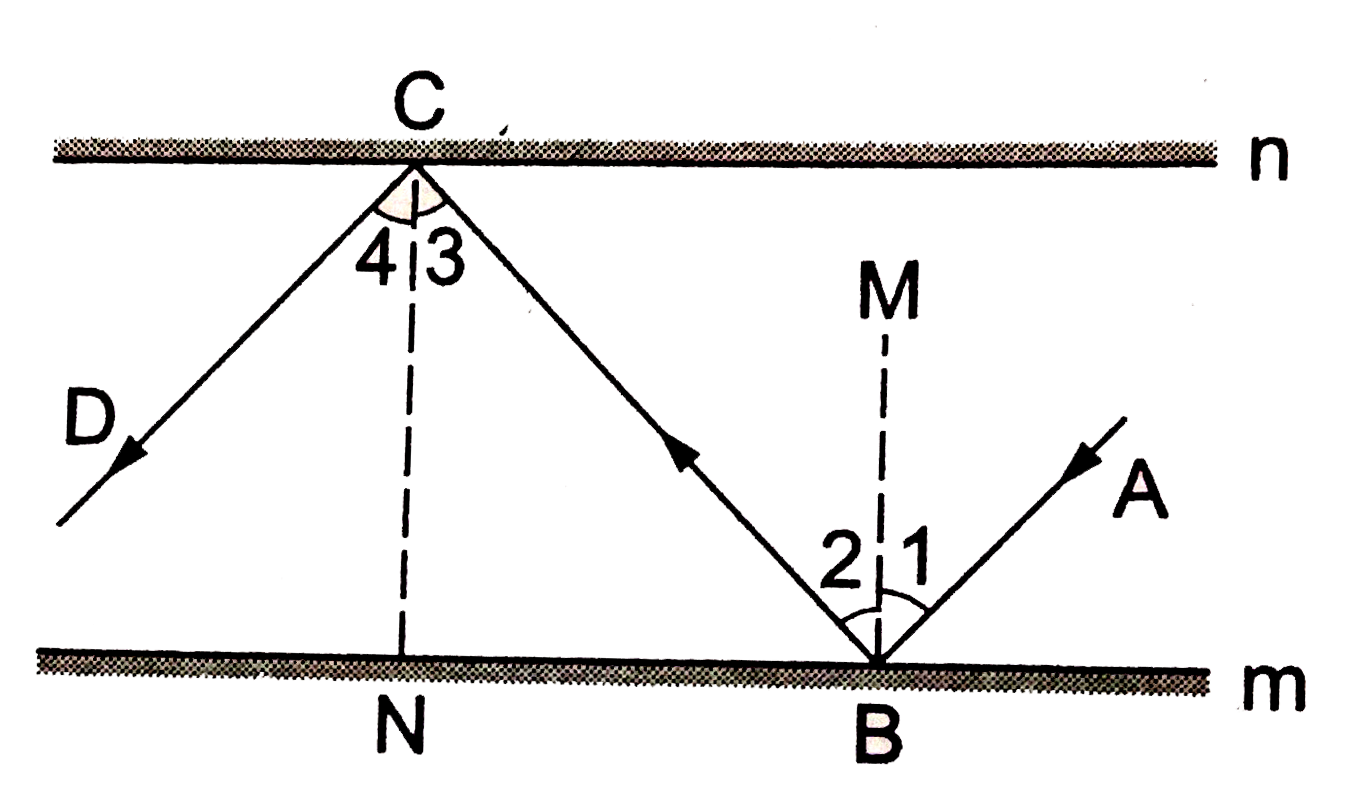
GIVEN Two mirrors m and n such that m∣∣n. The paths taken by the incident ray AB after reflections at m and n are BC and CD respectively. Also, BM and CN are normals to m and n respectively.
TO PROVE AB∣∣CD.
PROOF Since m∣∣n and CN⊥n, therefore, CN⊥m.
Now, BM⊥m and CN⊥m⇒BM∣∣CN.
Now, BM∣∣CN and BC is a transversal.
∴∠2=∠3 [alt. int. ∠s].
But, ∠1=∠2and∠3=∠4 [by laws of reflection]
⇒∠1+∠2=2(∠2)and∠3+∠4=2(∠3)
⇒∠1+∠2=∠3+∠4 [∵∠2=∠3⇒2(∠2)=2(∠3)]
⇒∠ABC=∠BCD.
But, these are alternate interior angles formed when lines, AB and CD are cut by the transversal BC.
∴AB∣∣CD
Topper's Solved these Questions
- BOOK - RS AGGARWALCHAPTER - LINES AND ANGLESEXERCISE - Exercise 7A12videos
LINES AND ANGLES
- BOOK - RS AGGARWALCHAPTER - LINES AND ANGLESEXERCISE - Exercise 7B16videos
LINES AND ANGLES
- BOOK - RS AGGARWALCHAPTER - LINES AND ANGLESEXERCISE - Multiple Choice Questions (Mcq)28videos
LINES AND ANGLES
- BOOK - RS AGGARWALCHAPTER - LINEAR EQUATIONS IN TWO VARIABLESEXERCISE - Multiple Choice Questions (Mcq)24videos
LINEAR EQUATIONS IN TWO VARIABLES
- BOOK - RS AGGARWALCHAPTER - MEAN , MEDIAN AND MODE OF UNGROUPED DATA EXERCISE - Multiple Choice Questions (Mcq)18videos
MEAN , MEDIAN AND MODE OF UNGROUPED DATA
Similar Questions
Two plane mirror inclined at an angle of 60° as shown in the figure, then the angle between the incident ray and the first reflected ray is_____°
View SolutionThe mirrors are perpendicular to each other as shown in the Fig. A light ray AB is incident on the mirror M1. Then the reflected ray will also suffer a reflection from the mirror M2). Then the final ray after reflection from M2 will be parallel to the incident ray, if -
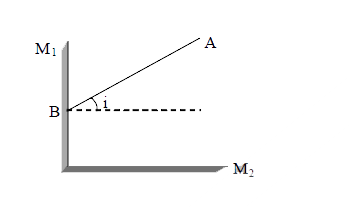 View Solution
View Solution
Knowledge Check
- Question 1 - Select One
If two plane mirrors are inclined at angle 0 to each other as shown, than angle of deviation of incident ray is
 A360−2θB360−2θC180−2θD180+2θ
A360−2θB360−2θC180−2θD180+2θ - Question 2 - Select One
Two plane mirrors A and B are aligned parallel to each other, as shown in the figure. A light ray is incident at an angle 30degree at a point just inside one end of A. The plane of incidence coincides with the plane of the figure. The maximum number of times the ray undergoes reflections (including the first one) before it emerges out is
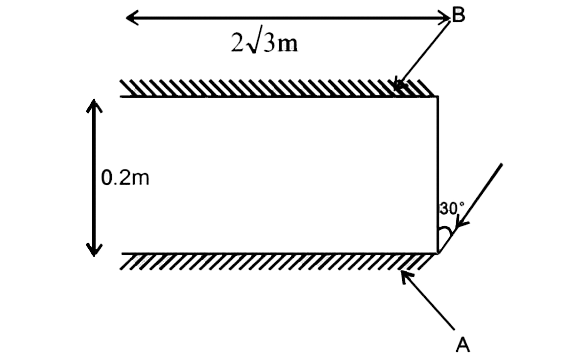 A28B30C32D34
A28B30C32D34 - Question 3 - Select One
Two plane mirrors P and Q are aligned parallel to each other, as shown in the figure. A light ray is incident at an angle of q at a point just inside one end of A. The plane of incidence coincides with the plane of the figure. The maximum number of times the ray undergoes reflections (including the first one) before it emerges out is:
 A1dtanθBdZtanθCIdtanθDNone of these
A1dtanθBdZtanθCIdtanθDNone of these
Two plane mirrors are inclined to each other such that a ray of light incident on the first mirror and parallel to the second is reflected from the second mirror parallel to the first mirror. Determine the angle between the two mirrors:
View SolutionTwo plane mirrors A and B are aligned parallel to each other as shown in the figure. A light ray is incident at an angle of 30∘ at a point just inside one end of A. The number of times the ray undergoes reflections (including the first one) before it emerges out is
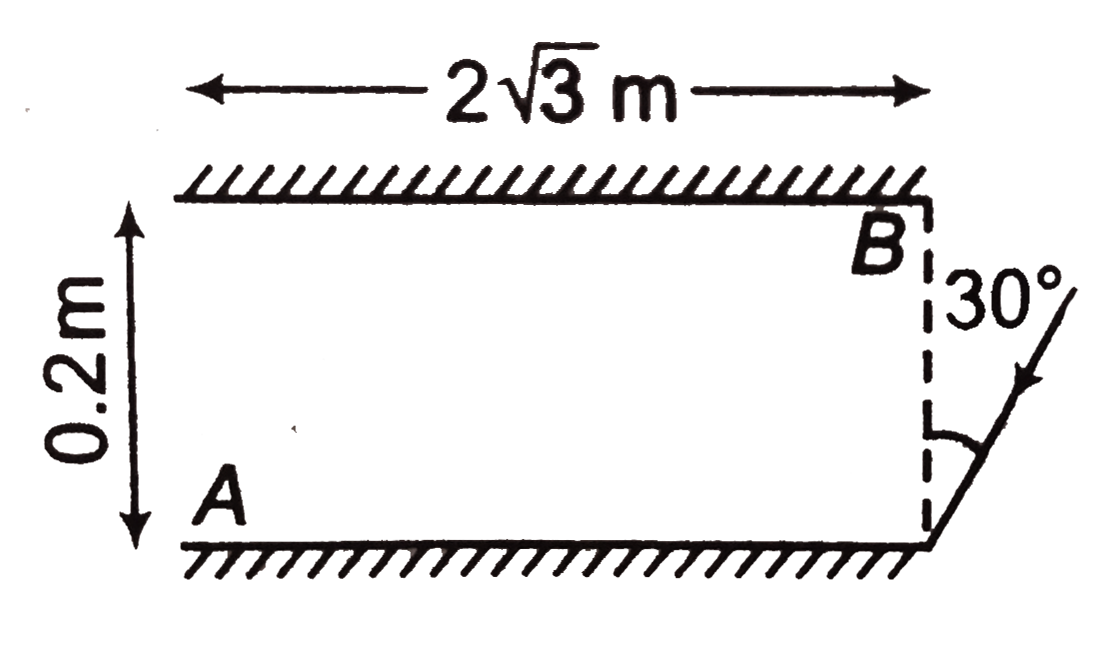 View Solution
View SolutionTwo plane mirrors are arranged at right angles to each other as shown in figure.A ray of light is incident on the horizontal mirror at an angle θ. For what value of θthe ray emerges parallel to the incoming ray after reflection from the vertical mirror ?
 View Solution
View SolutionTwo mirrors A and B are placed at right angles to each other as shown in Fig.16.4.

A ray of light incident on mirror A at an angle of 250 falls on mirror B after reflection. The angle of reflection for the ray reflected from mirror B would beView SolutionTwo plane mirros A and B are aligned parallel to each other, as shown in figure. A light ray is incident at an angle of 30∘ at a point just inside one end of A. The plane of incidence coincides with the plane of the figure. The maximum number of times the ray undergoes reflection (includeing the first one) before it emerges out is
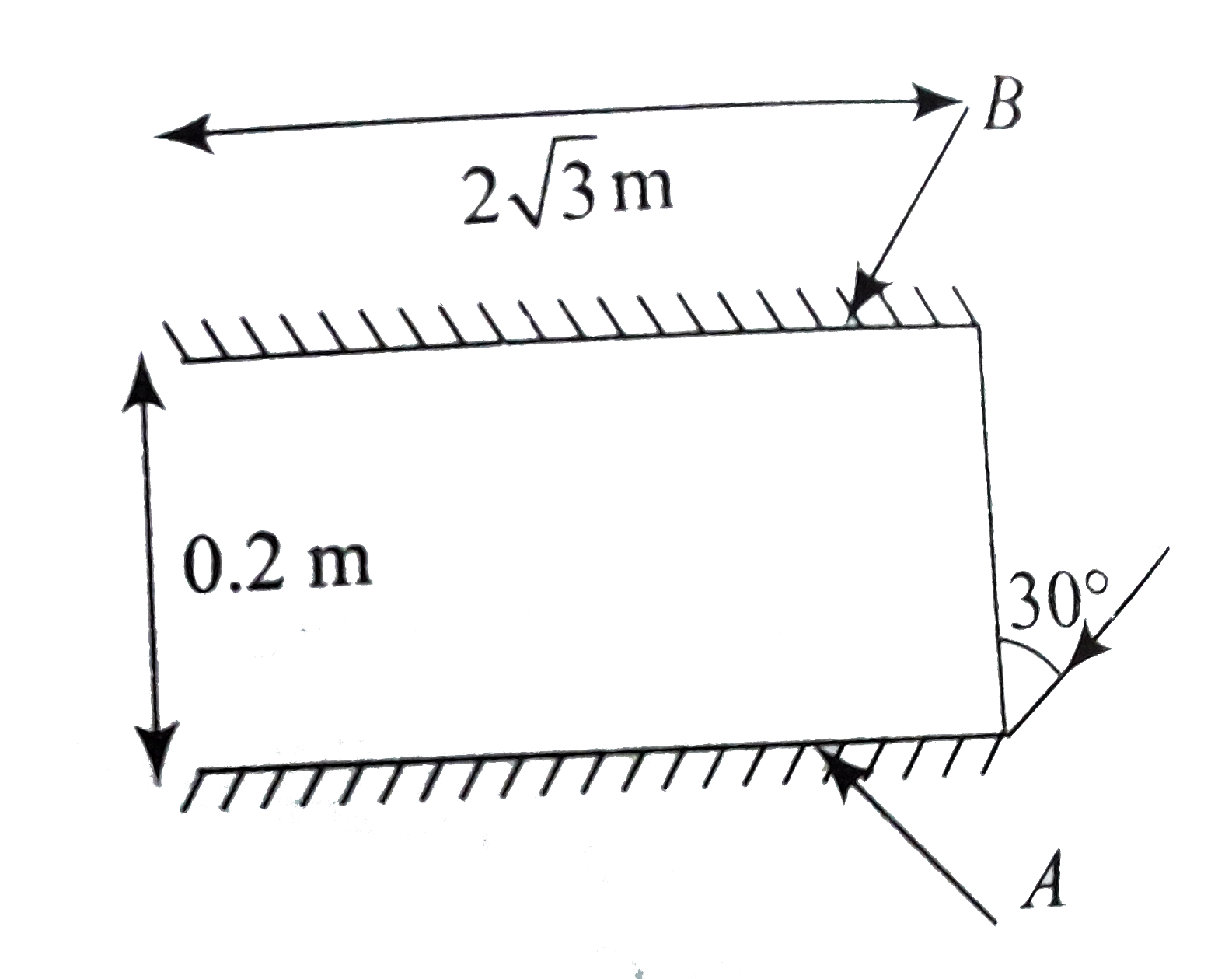 View Solution
View Solution

